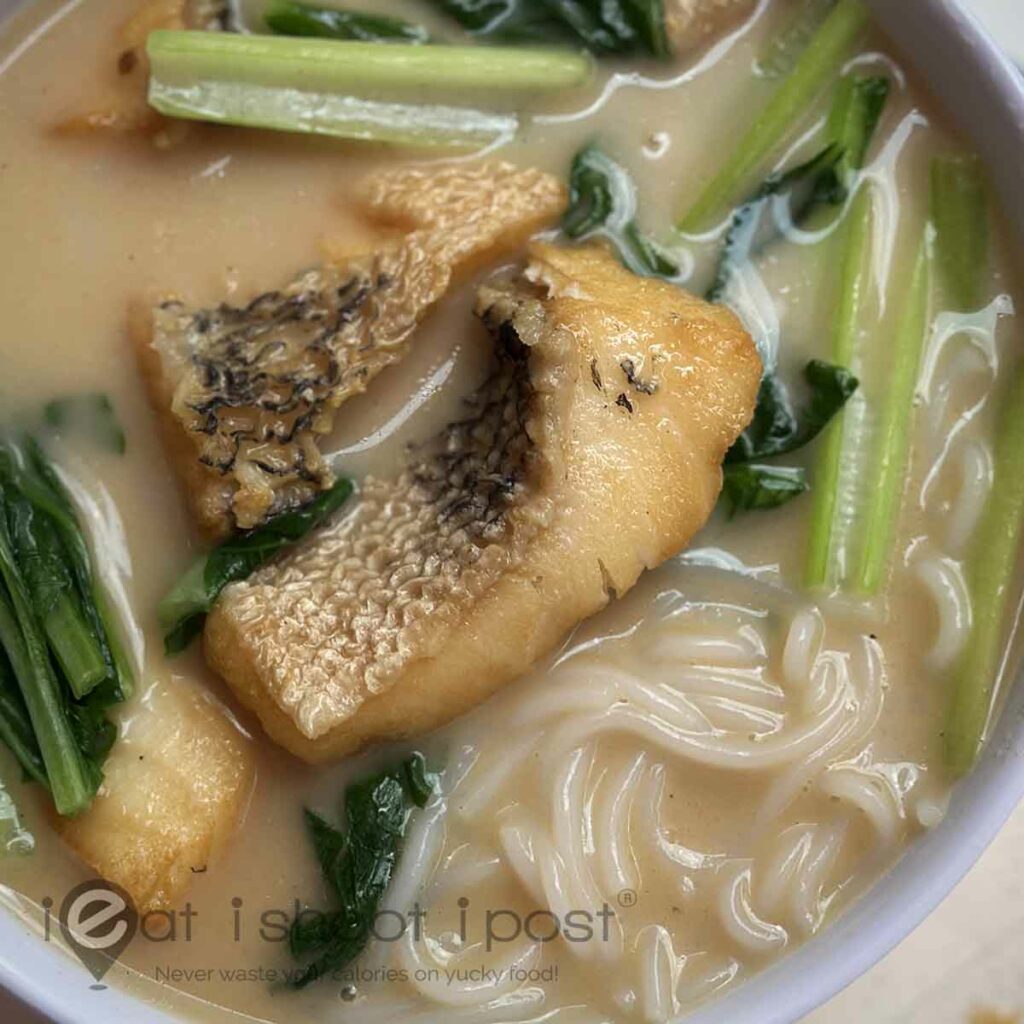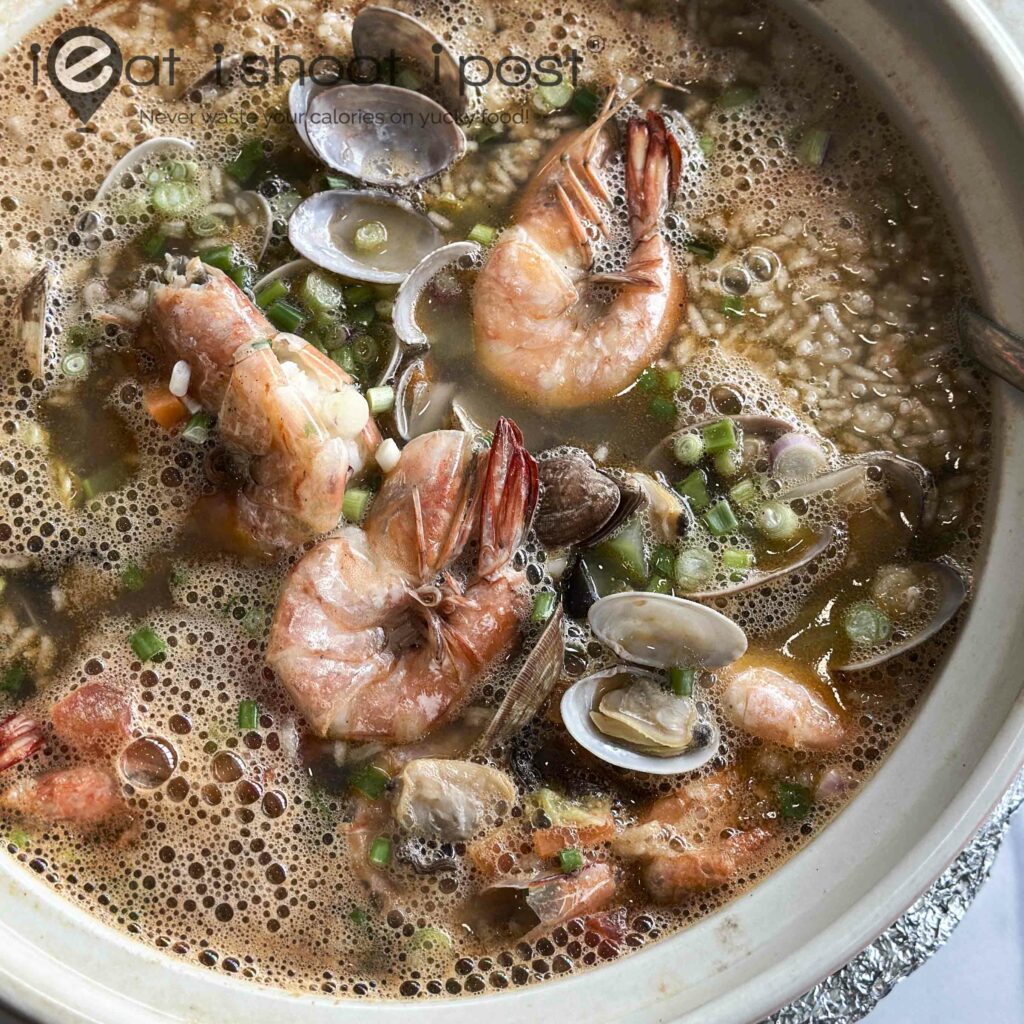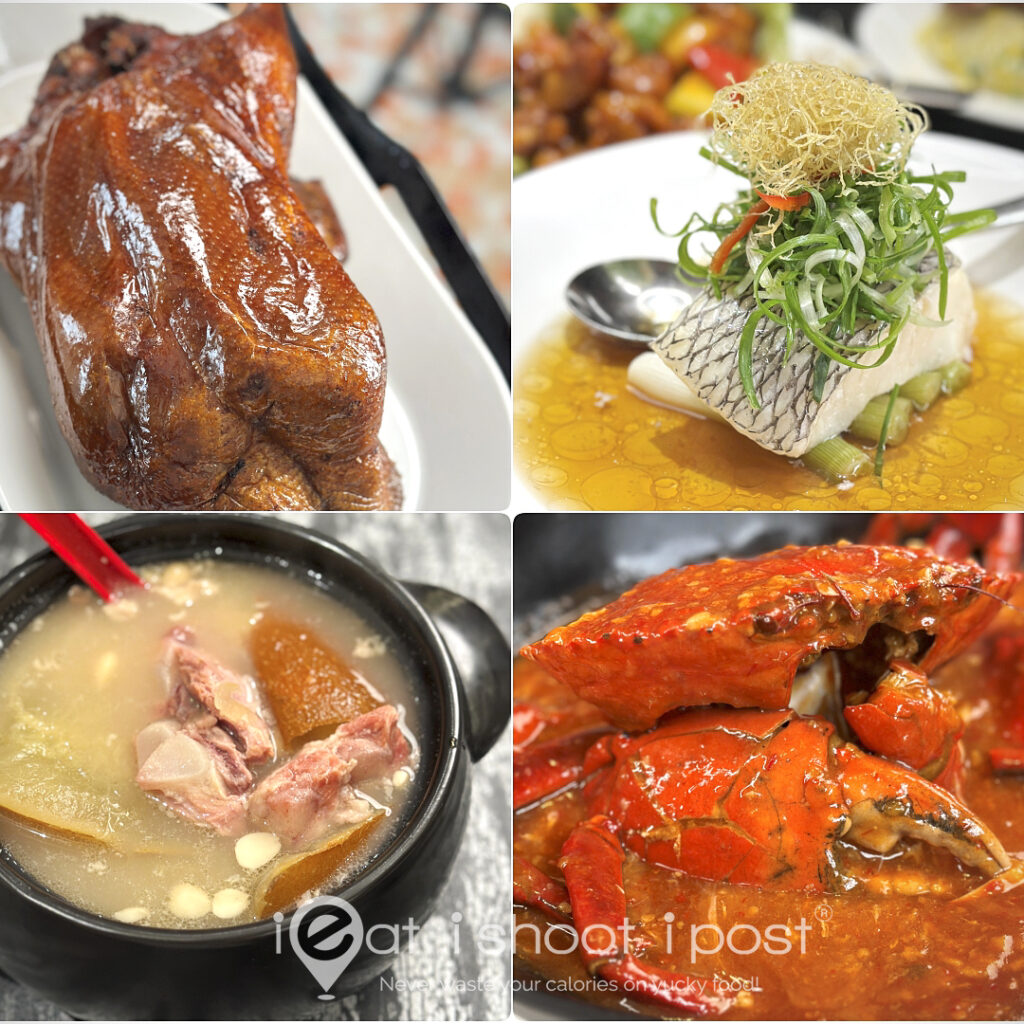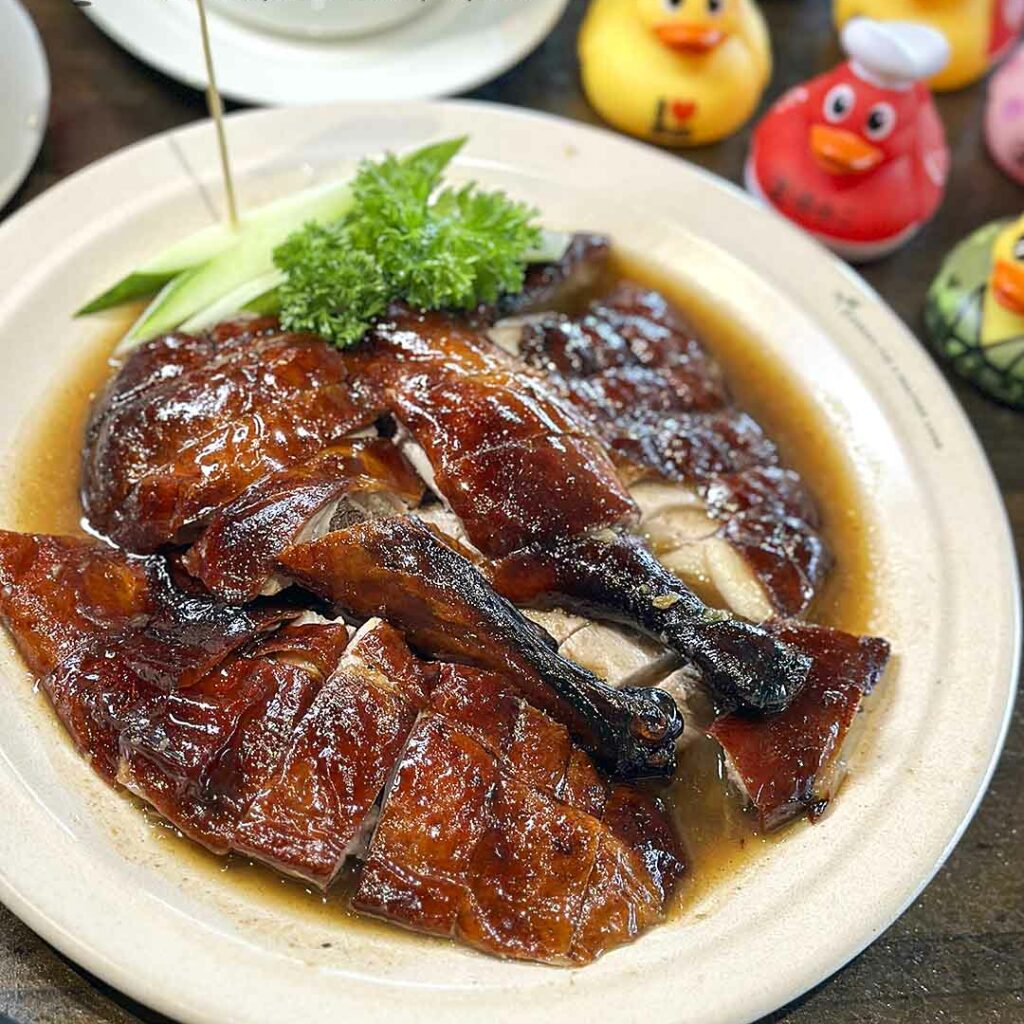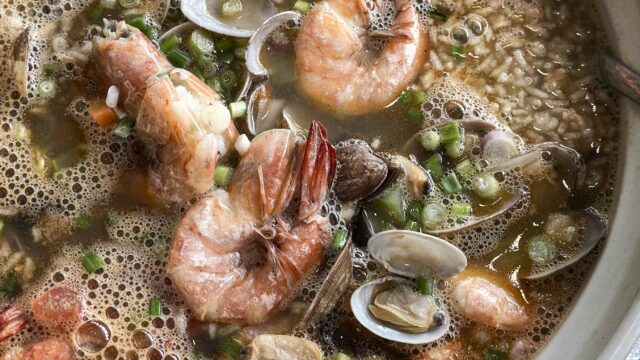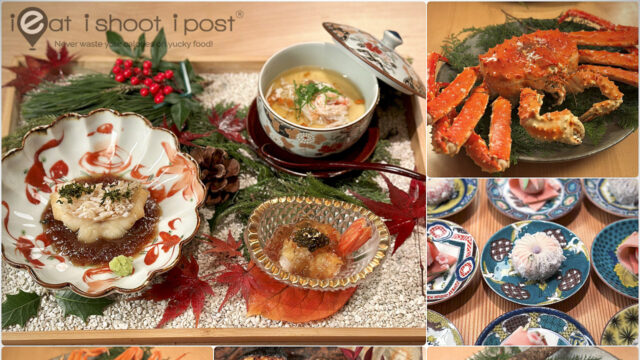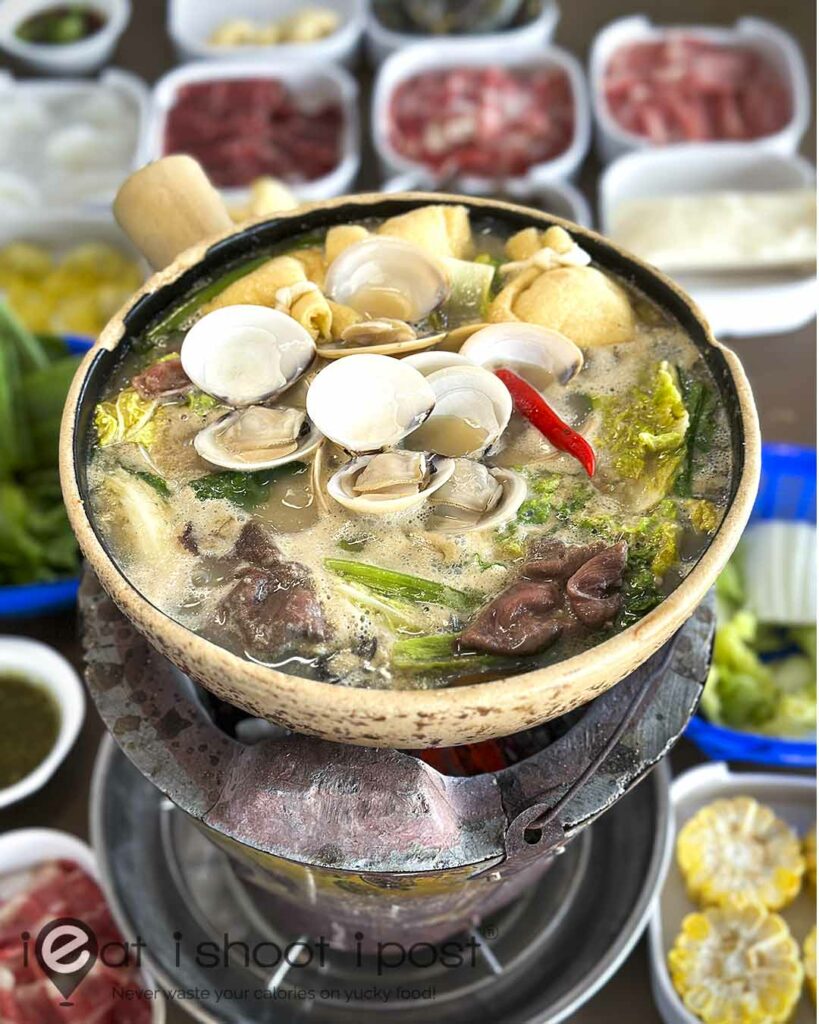
Hotpot Trends Over the Years
Singaporeans love gathering around a good hotpot. And over the years, hotpot purveyors have introduced various versions to set new trends. When I was a kid, we used to call it “steamboat.” It was essentially a vessel with a tube for charcoal to heat it, containing a simple broth along with meats and vegetables to cook in it. The reason for its popularity, especially during festive occasions, is straightforward: it’s easy to prepare, requires minimal cooking skills, and encourages everyone to participate in the meal’s preparation.
Every few years, hotpot takes on a new twist. First, someone added a grill around the pot of soup. Remember Marina South? Later on, someone else reversed it by placing the soup around the grill (like in mookata). Other Innovations include the introduction of silky collagen broths and fiery Chong Qing-style mala soups.
The cooking methods have also evolved—from traditional charcoal to gas and induction cookers. Someone even thought of using pressurized steam to cook the soup! Yet, despite these advancements, there’s something undeniably appealing about charcoal. Anyone who has indulged in hotpot over the past two decades will surely resonate with these ever-evolving innovations.
Lala Claypot Comes to Singapore
The latest trend in hotpot culture is the lala claypot, which originated across the Causeway with the popular JB Tai Lao lala claypot. This year, it has crossed over to Singapore and is rapidly gaining popularity. The key difference lies in the setup: instead of the usual steamboat on an induction plate, the lala claypot features a traditional claypot placed over an old-school charcoal stove, with lala (clams) added to a flavourful bone broth.
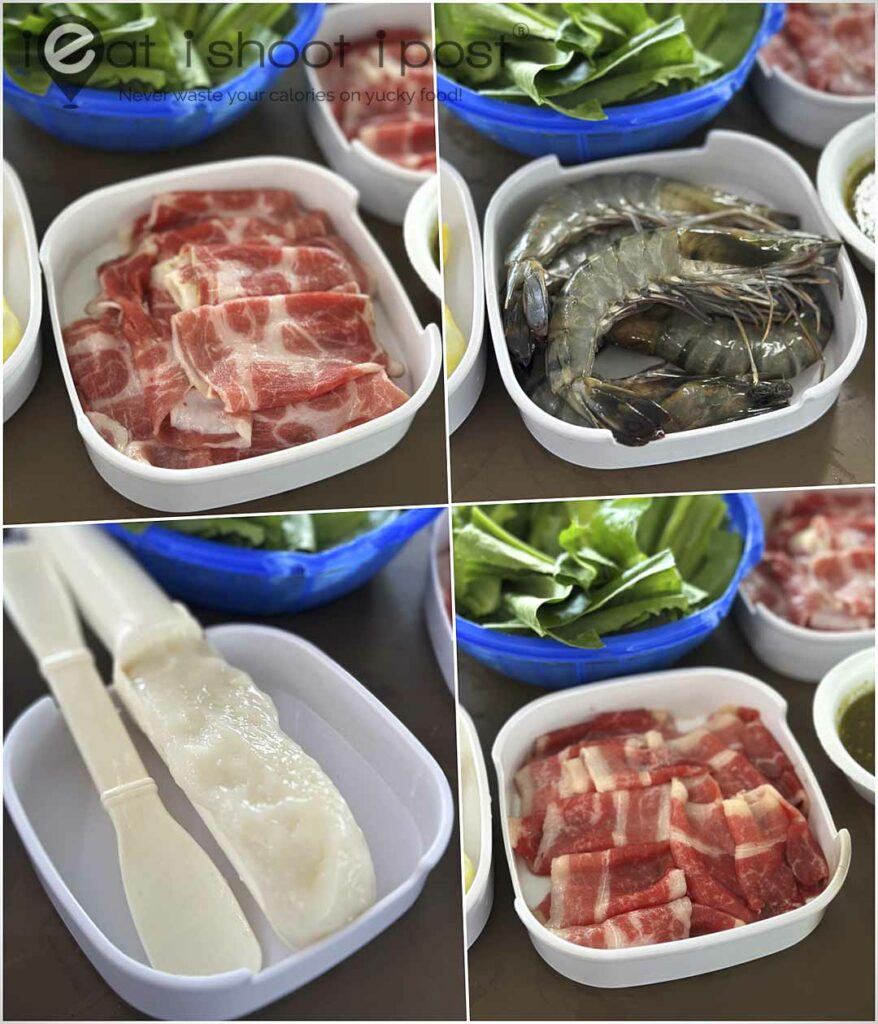
No matter how hotpot evolves, the essentials of a good hotpot experience remain the same: a rich broth, fresh and quality ingredients, and a flavourful dipping sauce. We’re happy to report that Kallang Lala Hotpot has managed to nail these essentials.
Live Lala and Fresh Ingredients
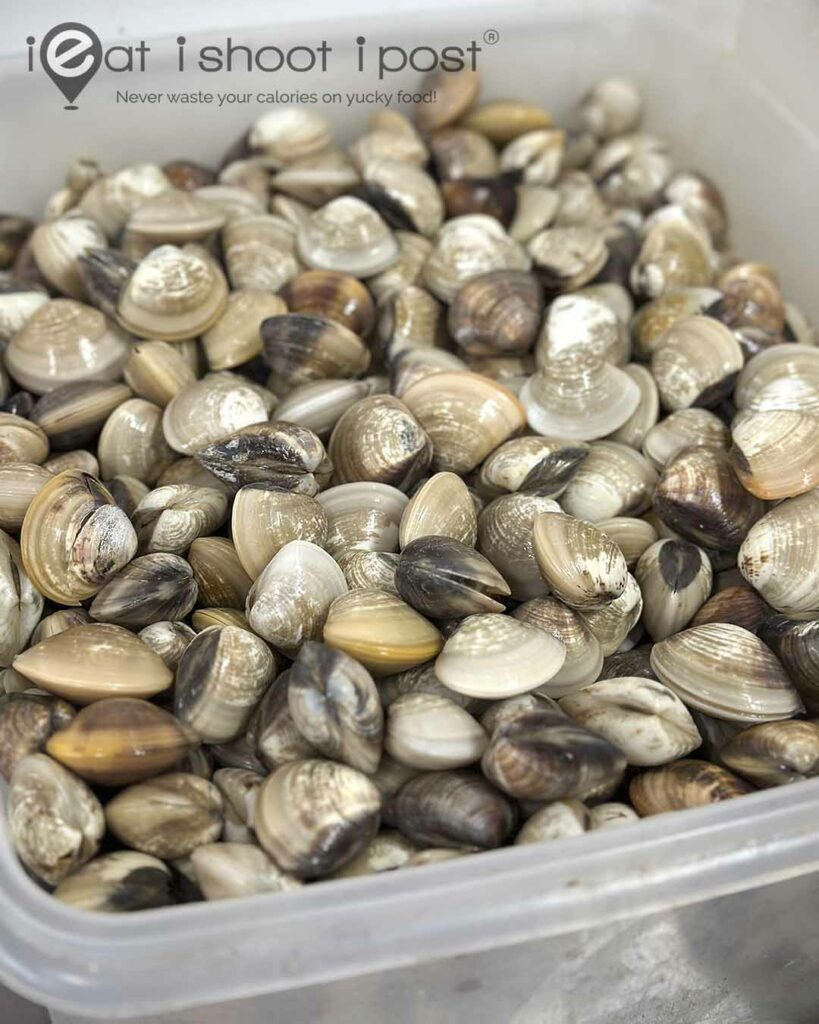
Starting with the lala, we were pleased to learn that they receive live clams delivered fresh to the stall daily. They pride themselves on offering some of the largest clams available, though this depends on the season. During our visit, heavy rain meant we only got medium-sized clams.
They were still excellent, and contributed to an umami-rich sweetness to the soup base. Made from pork and chicken bones, along with pork skin, the broth isn’t as silky as a collagen broth but boasts a satisfying depth of flavor and a pleasing mouthfeel. They make it a point to blanch the clams first in hot water to ensure that you don’t get any sand in the soup as well as to discard the dead ones that fail to open.
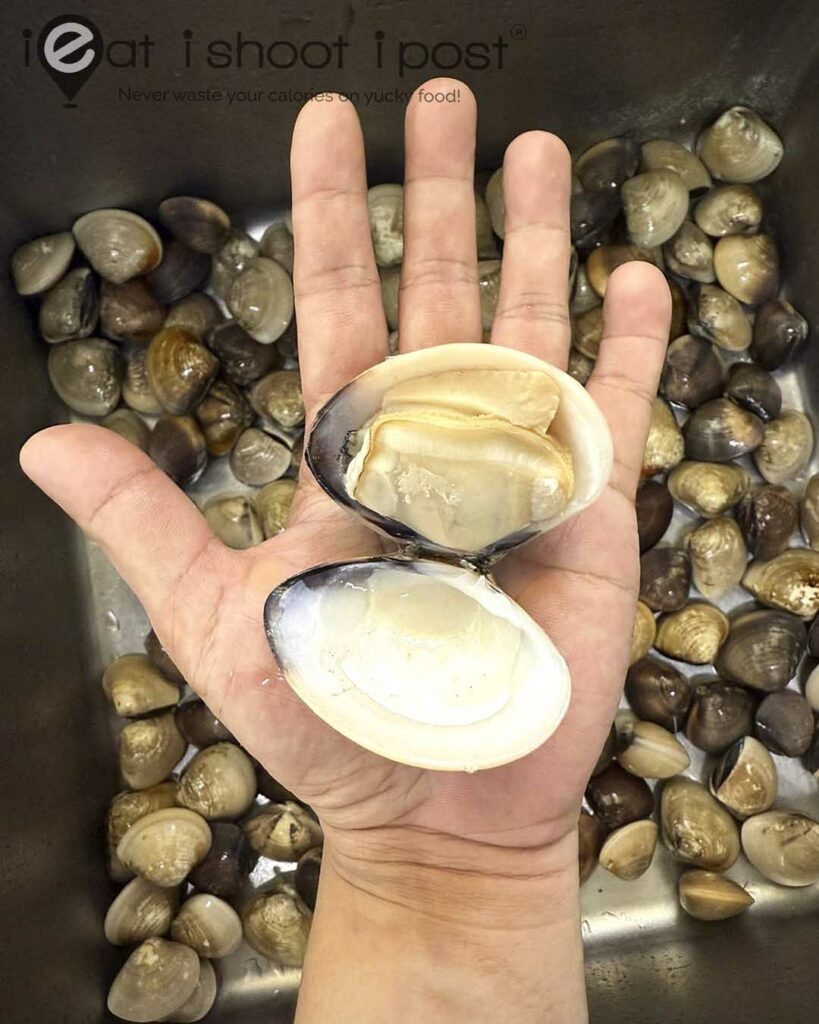
Edwin, the owner, is meticulous about quality, insisting that all meats are sliced to order. Both the USDA beef brisket and Iberico pork collar were very good. I found the lamb was a bit too gamey for my taste but Lisa was fine with it.
Aside from the clams, their other seafood like the black tiger prawns were also delivered fresh daily. The tiger prawns are farmed in Malaysia and are a good size, sweet and have a good texture.
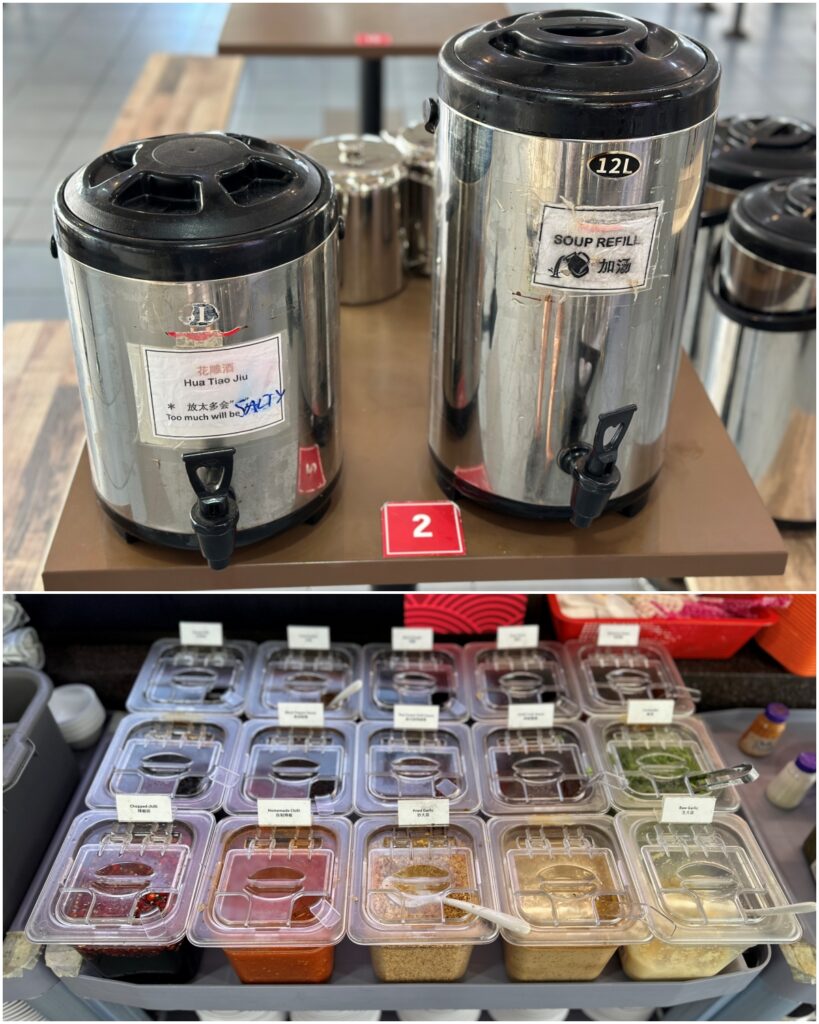
Good Selection of Sauces at No Extra Charge
Finally, they offer a generous selection of sauces, available for you to mix and match at no extra cost.
After experimenting with a few combinations, I created my perfect blend: their house-made chili sauce, goma-style sauce, soy sauce, and shallot oil. The result was a balanced mix of heat, tanginess, and a creamy, nutty richness that complemented the hotpot beautifully.
Other choices include Thai style green chilli sauce and lao gan ma. With 16 different sauces and condiments, you should be able to find something that you like.
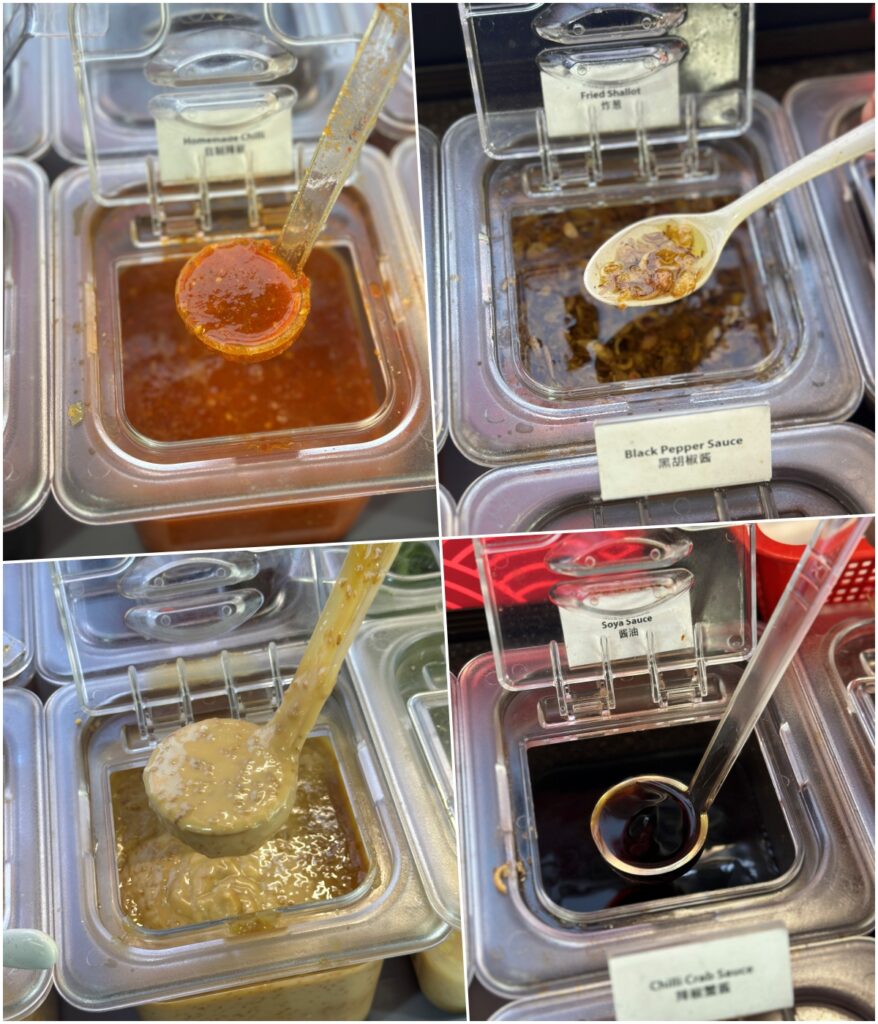
Considering the quality of the ingredients, we found the prices reasonable, with a satisfying hotpot experience costing around $20–$30 per person. While the claypot didn’t necessarily enhance the flavour compared to a traditional steel pot, its pairing with a charcoal stove adds a rustic, romantic charm. That said, the stove’s height on the table can be a little awkward.
Like many hotpot joints located in industrial estate canteens, the open-air setup means you’ll likely work up a good sweat during your meal. On the bright side, there’s plenty of parking, and it’s easy to find a table in the evenings when most of the other stalls are closed.
Zi Char dishes are also good
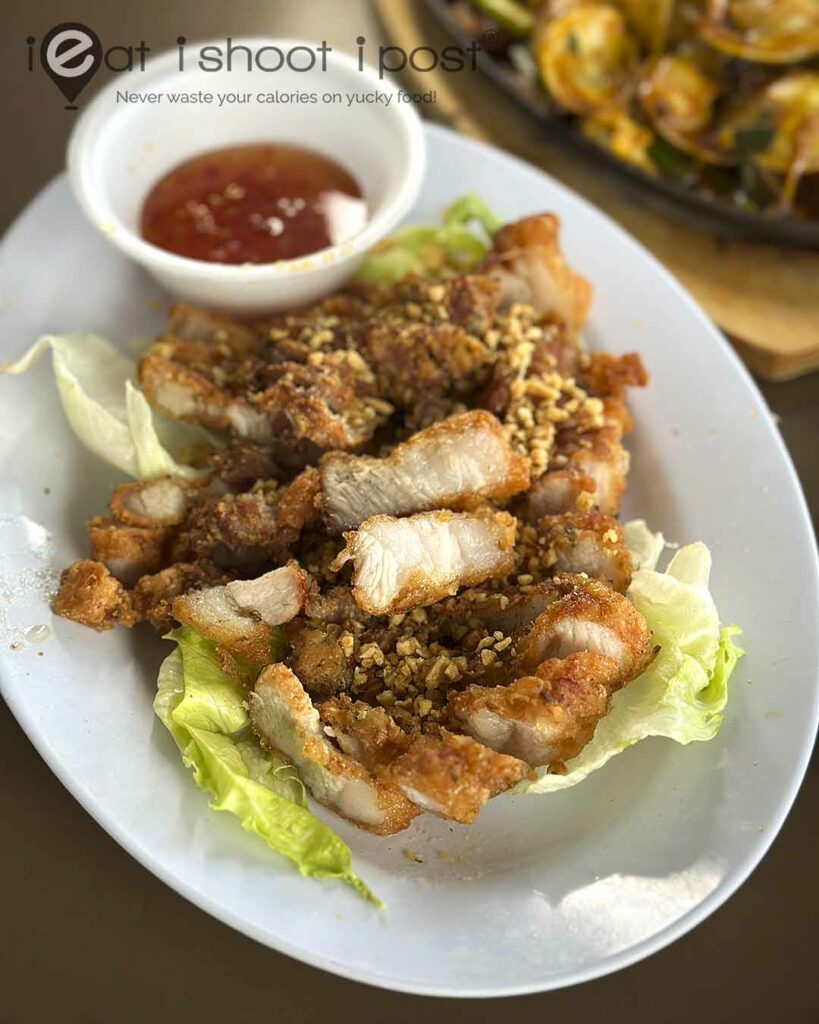
Aside from the hotpot, you can also order Zi Char dishes. Their fried garlic pork is very good. They use pork belly which has a good balance of fat and lean meat and the seasoning is quite addictive. Lisa thought the garlic could be more pungent.
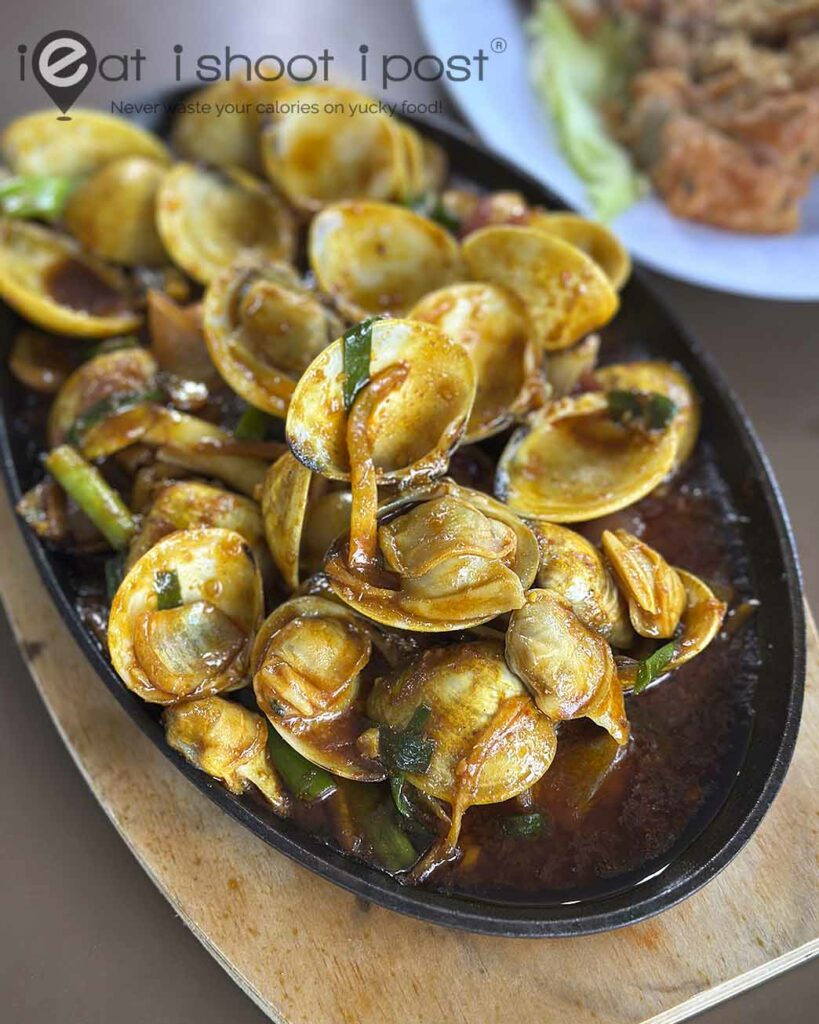
In case you want extra lala, their Kam Heong Lala is also very nice. Their Chef hails from Kota Kinabalu and is quite competent behind the wok and of course the live lala does make a difference to the sweetness of the dish.
Conclusion
Kallang Claypot Lala is a good place to enjoy hotpot with fresh ingredients without paying extra for the ambiance and service. Their lala broth made from live lala is very good and their seafood and other ingredients are fresh and well sourced. They are well known for their Jumbo-sized lala which offers better flavour and texture but these are dependent on weather conditions.
Overall, you should enjoy a good hotpot experience for around $20-$30 per head without paying extra for the bells and whistles.
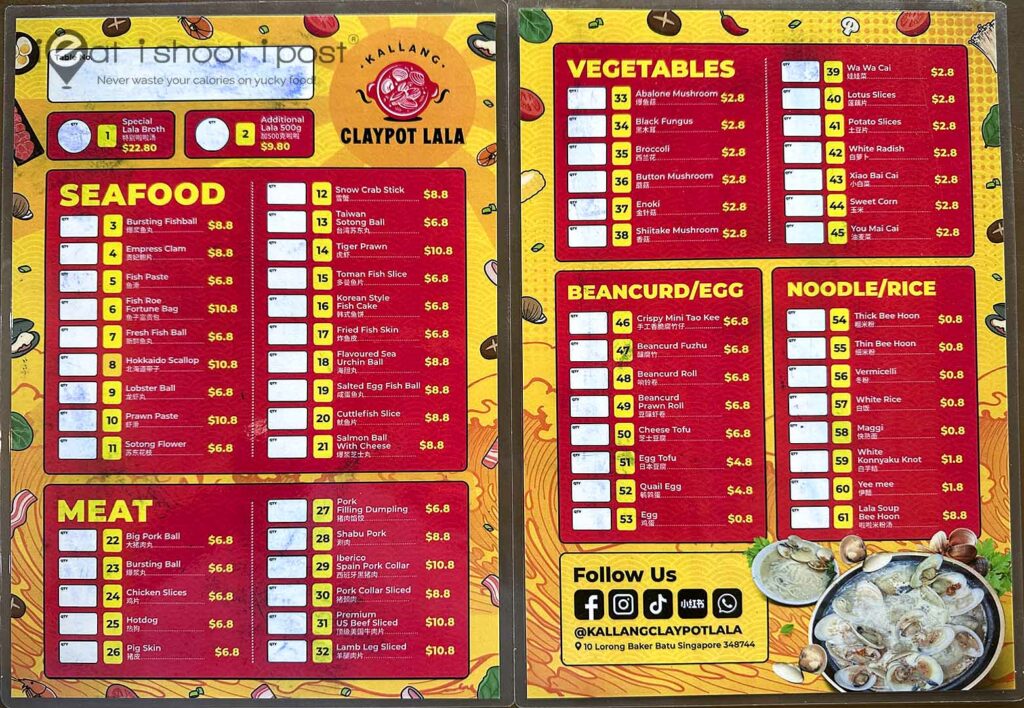
Disclosure
This post was done in partnership with Kallang Claypot Lala. Opinions expressed are those of our own.



